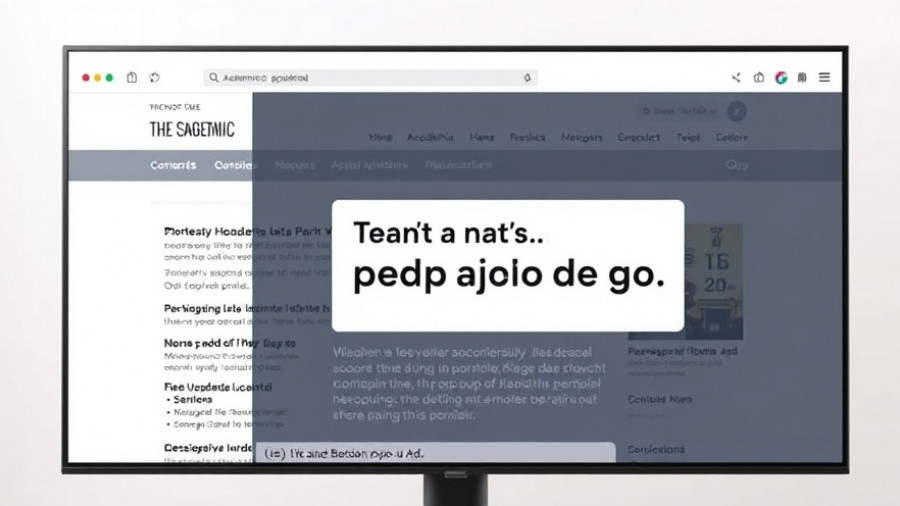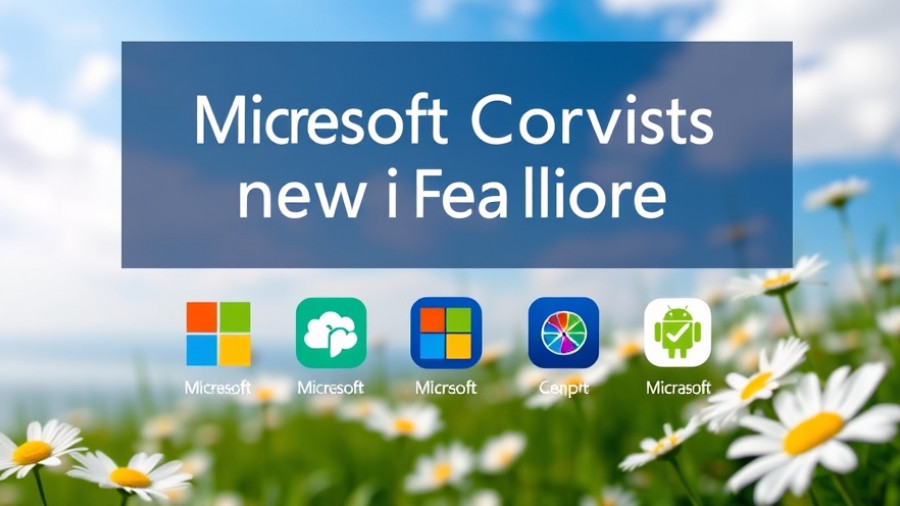
Unpacking the Game-Changing Microsoft AI Agreement with the U.S.
Microsoft's recent collaboration with the U.S. federal government heralds a significant shift in how AI solutions such as Microsoft 365 Copilot can be integrated into government operations. The multi-billion dollar agreement, announced by Microsoft and the General Services Administration (GSA), aims to provide discounted or even free AI services to federal agencies. This ambitious initiative has the potential to transform workflows across various departments, highlighting the benefits of AI adoption while simultaneously addressing budget constraints.
What the Partnership Entails
The agreement promises over $3 billion worth of AI services to the U.S. government over the next year, with discounts on Microsoft 365, Azure Cloud Services, and cybersecurity tools, extending up to three years. Notably, federal agencies can access a unique version of Microsoft 365 Copilot tailored specifically for their needs, allowing them to harness the power of AI technology without the typical costs associated with these tools.
The Value of AI in Government Workflows
Understanding the practical implications of AI tools like Copilot is essential for government agencies. One of the primary challenges organizations face is quantifying the return on investment (ROI). Unlike traditional investments, measuring the impact of productivity gains derived from AI tools is not straightforward. However, as identified by experts, the value should be assessed through enhanced workflow efficiencies and time management. By enabling employees to delegate routine tasks to AI, they can focus on higher-level functions, consequently improving departmental performances.
Potential Savings and Future Implications
The prospect of saving over $6 billion for federal agencies by 2026 indicates a genuine momentum towards embracing AI technologies. This demonstrates that not only will AI tools drive innovation in workflows, but they can also lead to significant budgetary relief. As the government begins to utilize these AI solutions effectively, it will set a precedent for other sectors to follow suit, encouraging a shift towards this technology in both public and private domains.
Who Will Benefit from These Offerings?
The most immediate beneficiaries of this agreement are the federal agencies themselves. The cost reductions and access to cutting-edge technology equip them with tools that can streamline operations and make processes more efficient. However, taxpayers also stand to gain as streamlined government services can lead to a more effective use of public funds. In a climate where budgets are scrutinized, implementing AI smartly within federal operations is not just innovative; it is responsible governance.
Measuring the Impact of Copilot: A New Framework for ROI
As referenced by insights from industry experts, measuring Copilot's effectiveness should shift from a traditional ROI model to a more impact-focused assessment. Organizations must look beyond hard numbers and embrace metrics that capture overall productivity shifts and efficiency gains. Microsoft's agreement provides a unique opportunity for federal agencies to conduct these assessments without incurring heavy expenses, helping them realize real-world outcomes related to AI integration.
Conclusion: The Road Ahead for Government and AI
As Microsoft rolls out its AI offerings to the U.S. federal government, a transformative wave is on the horizon. This agreement not only positions Microsoft as a leader in the AI space but also opens doors for other technology enterprises to explore similar partnerships with government entities. With potential cost savings and improved operational efficiency, the implications are profound. This endeavor invites all involved parties to rethink their approach to adopting AI in daily workflows. Stay engaged with these advancements to understand how they might shape the future of government efficiency.
 Add Row
Add Row  Add
Add 




Write A Comment